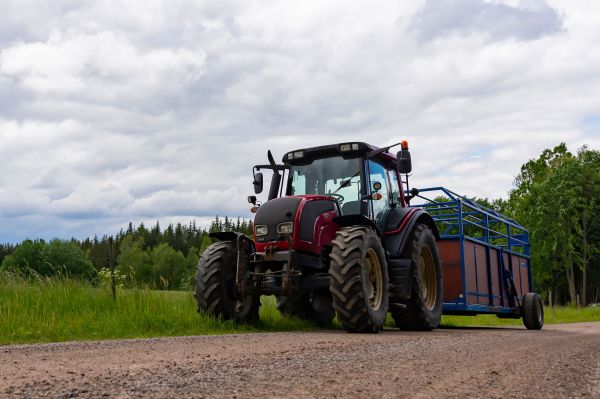
Ciaran Roche
FBD Risk Manager

Agricultural vehicle safety on the road

Ensuring safety on the road is a critical responsibility for farmers and agricultural contractors. Agricultural vehicle accidents are often the result of several key factors:
- Excessive speed – driving too fast for conditions;
- Inexperienced operators – lack of adequate training and experience;
- Distraction and fatigue – reduced attention and alertness;
- Poor visibility and lighting – inadequate visibility and insufficient vehicle lighting;
- Overloading – trailers carrying excessive or oversized loads; and
- Mechanical issues – poor vehicle condition and maintenance.
- Preventing these accidents involves
maintaining a safe speed, ensuring vehicle compliance with regulations and safety standards, and keeping the vehicle in good mechanical condition. Operators must be competent, free from distractions and well rested. Using hand-held mobile phones while driving is illegal and dangerous as it significantly increases the risk of accidents.
Vigilance around recreational users
Operators of large tractors, trailers and machinery must exercise extra caution, especially on narrow country roads. We would also encourage pedestrians and cyclists to wear high-visibility vests, use the correct side of the road, travel in single file, and stay alert for approaching vehicles.
Vehicle maintenance
Regular maintenance of agricultural vehicles and implements is crucial for safety. Key areas to check include:
- Lights and indicators – ensure all lights and indicators are functioning properly;
- Brakes and tyres – check for effective braking systems and well-maintained tyres;
- Windows, mirrors and wipers – keep them clean for maximum visibility and maintain the wipers in good working order; and
- Steering and hydraulics – regularly inspect and maintain these systems.
- Importance of proper lighting
Using agricultural vehicles with inadequate lighting poses significant safety risks. Rear-end collisions often occur due to misjudging speed differences and side-impact collisions can happen during wide turns. Ensure vehicles are equipped with full lighting systems, including side lamps, headlamps, rear lamps, stop lamps, direction indicators, amber beacons and number plate lighting.
Securing loads
Overloading trailers can lead to instability and inadequate braking distances. Regulations specify maximum weight loads, vehicle lengths, and widths for public roads. Farmers and contractors should familiarise themselves with these standards; guidance is available on the Road Safety Authority website. Oversized loads, particularly on narrow, winding roads, must be driven with extra caution. A warning vehicle should precede large machinery like combines to alert oncoming traffic. Ensure all loads are well-secured to prevent materials from falling or spilling onto the road.
Use of signage
Strategically placed warning signs can significantly reduce accident risks. During harvest time, place signs along roadways and at farm/field entrances, especially concealed ones, to alert passing traffic about large machinery using the roadway.
Road clean-up
The Roads Act 1993 mandates keeping public roads clear of hazardous materials. Agricultural machinery operators must try to maintain roads in a clean manner, washing down vehicle tyres when necessary to prevent mud and stones from being carried onto public roads.
Summary
Remember, always drive at a safe speed and be considerate of other road users. Proper vehicle maintenance, appropriate lighting, secure loads, and vigilance can prevent many accidents. By following these guidelines, farmers and agricultural contractors can significantly improve road safety for everyone

For more farm safety information, scan the code




